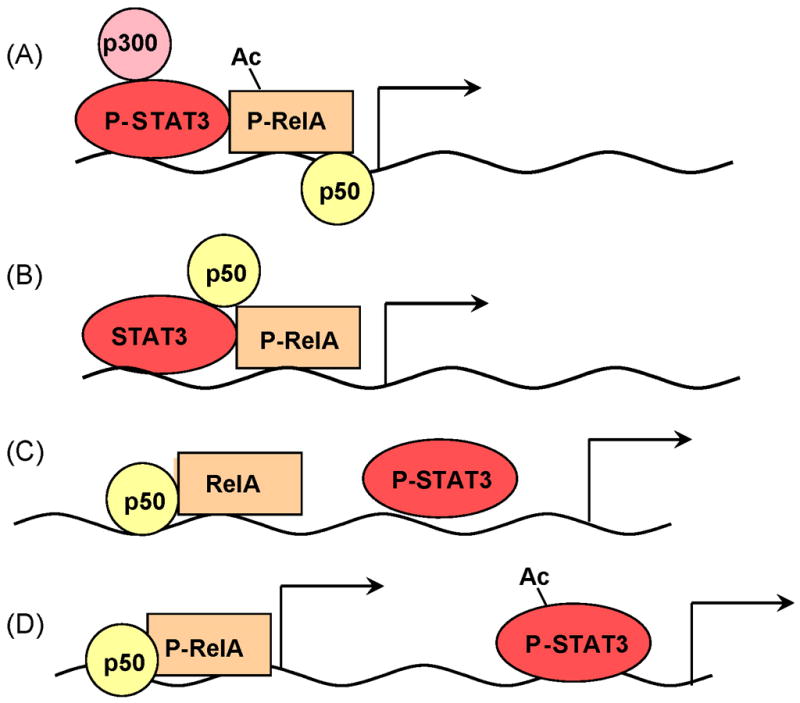Figure 1.

Different modes of NF-κB and STAT3 interaction in transcriptional control. A) Activated STAT3 interacts with p65 RelA to recruit the p300 HAT complex to cause RelA, acetylation that prolongs its nuclear retention. This mechanism may mediate STAT3-NF-κB dependent gene transcription. B) STAT3 (either phosphorylated or non-phosphorylated) interacts with p50/NF-κB and/or RelA and together they induce gene transcription through binding to composite sites. C,D) STAT3 and NF-κB do not interact physically, but bind to the same (C) or different (D) promoters, thereby synergistically activating gene expression (C) or acting individually on genes that are either NF-κB- or STAT3-dependent (D).
